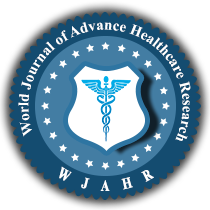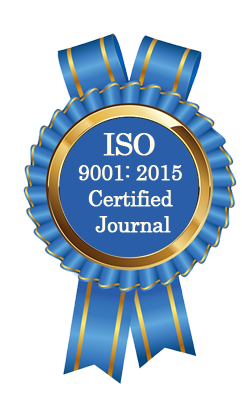| All | Since 2020 | |
| Citation | 105 | 60 |
| h-index | 4 | 4 |
| i10-index | 3 | 2 |
WJAHR Citation 
Login
News & Updation
Best Article Awards
World Journal of Advance Healthcare Research (WJAHR) is giving Best Article Award in every Issue for Best Article and Issue Certificate of Appreciation to the Authors to promote research activity of scholar.
Best Article of current issue
Download Article : Click here
Indexing
Abstract
IDENTIFICATION TICK SPECIES DETERMINATION OF THEIR SEASONAL RATE IN THE REPUBLIC OF GUINEA
*Aly K., Alpha Oumar Sily D., Mohamed K., Youssouf S., Mamadou Yero B., Ansoumane S.
ABSTRACT
Ticks are hematophagous arthropods that parasitize almost all vertebrates and can bite humans occasionally. They transmit many germs which are at the origin of zoonoses. This study concerns the identification of tick species involved in the publication of rickettsioses in the Republic of Guinea. The objective of this study was to collect and identify tick species in order to determine their frequency according to the seasons in two prefectures of the Republic of Guinea. Conventional methods used for catching ticks have been used. Samples were taken in the prefectures of Mamou and Kindia. A total of 200 tick samples were taken from the body of N'dama cattle, one hundred (100) in the Kindia administrative area and one hundred (100) in Mamou. The harvested ticks were packaged in the sterile cotton-clogged sterile tubes, labeled and whose information is given on the specimen card: name of animal, tattoo, dress, locality, owner. The cooler was used to send the samples to the Kindia Research Institute for Applied Biology laboratory. In the laboratory, the dichotomous tick identification key was used to identify all the species contained in a pled sample. It focused on the presence and absence of porous area, chitinized scutum, the number of pair of legs, absence of gonopore, surface of the non-rough scutum, stigma with tail, lateral groove. Eight species were identified, including five at Mamou: Amblyomma variegatum (63.09%); Ripicephalus decoloratus (14.29%); Ripicephalusannulatus (15.43%); Hyalomma tuncatum (5.95%) and Haemaphysalis leachi (1.19%). In Kindia they are Amblyomma variegatum (96.92%); Hyalomma truncatun (2.05%) and Ripicephalus geigyi (1.03%) that have been identified. Ticks were much more abundant in the rainy season. As the localities visited are transit and livestock marketing areas, epidemiological surveillance of tick-borne diseases should be carried out with the ultimate aim of preventing the spread of tick-borne zoonoses in the study areas. In Guinea, ticks are present from May to September however, it is in August that the greatest outbreak is observed. These months are in the rainy season in the regions visited. It should be noted that most known species are sensitive to climate change.This entirely exclusive research is devoted to the identification of ticks in the regions of Mamou and Kindia, because these localities are breeding areas par excellence. They are also placing of transit and marketing, which are factors favoring the transmission of ticks and collaterally rickettsioses. It shows the disparity of tick species according to the area of investigation. Tick-borne disease surveillance programs must be implemented in order to maintain the health of populations.
[Full Text Article] [Download Certificate]
